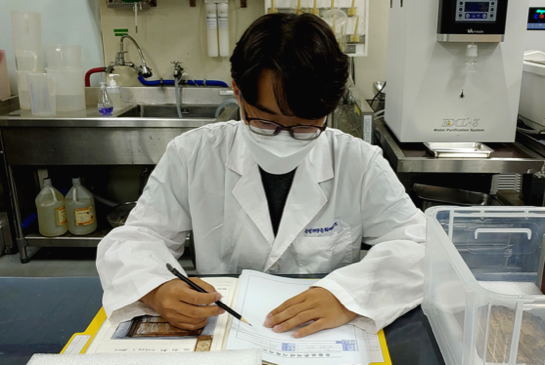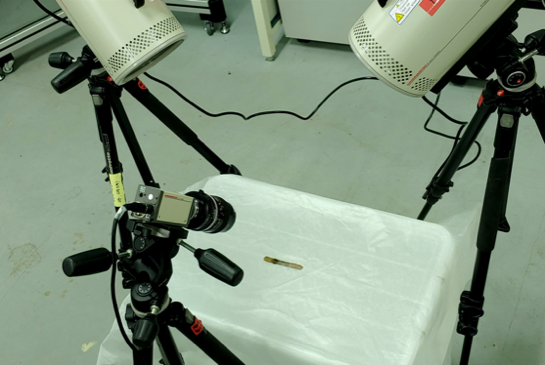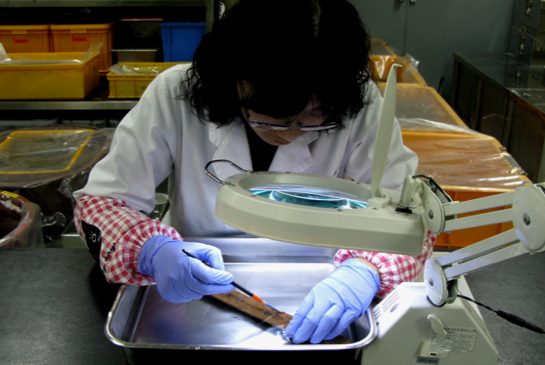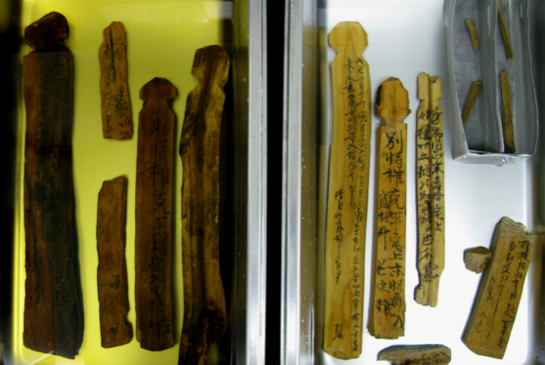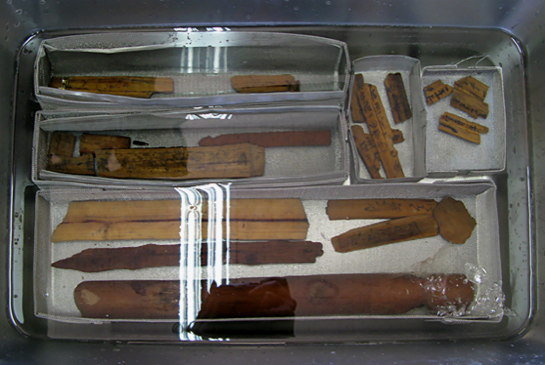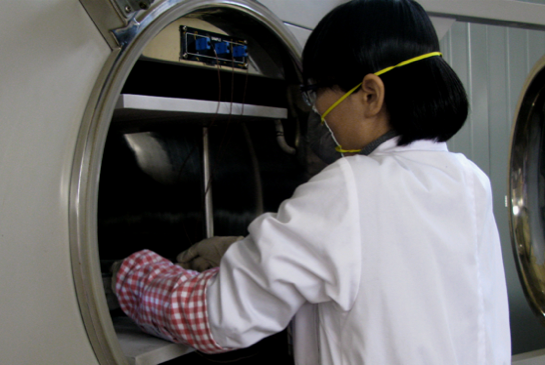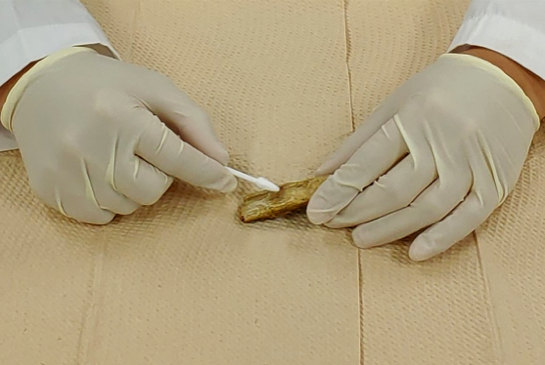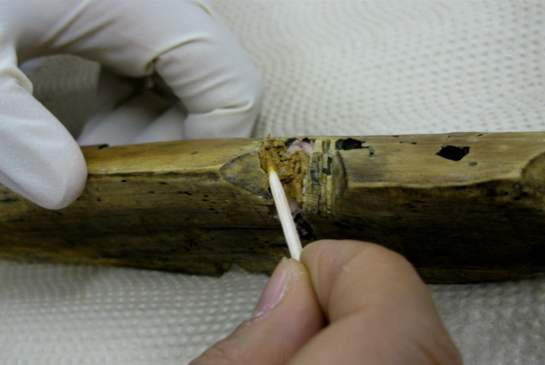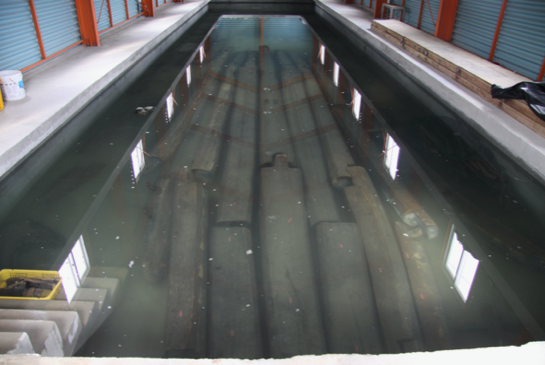The National Research Institute of Maritime Cultural Heritage logo
Conservation of Organic Matters Background Image
Conservation of Organic Matters
Organic materials recovered from the seabed are submerged in water for prolonged periods of time, therefore, their inner cells have all decayed and are instead filled with moisture. When these artifacts are suddenly exposed to air, damage to their shape, etc. occurs due to the sudden change in environment. The moisture is thus replaced with highly polymerized chemicals in order to prevent deformation, and conservation treatment is performed in order to preserve the organic materials in a stable state.
-
STEP 1
Condition analysis before conservation -
STEP 2
Material analysis -
STEP 3
cleaning
-
STEP 4
Desalinization -
STEP 5
Dimensional stabilization -
STEP 6
Vacuum freeze drying
-
STEP 7
Surface treatment -
STEP 8
Bonding and restoration -
STEP 9
Storage and maintenance
-
STEP 1
Condition analysis before conservation Before treating the organic materials, a comprehensive analysis is conducted, which is written in the artifact records card and is photographed. The amount of damage and the structure is assessed through visual inspection, and splintering or small cracks are inspected using a microscope, and infrared and x-ray equipments. -
STEP 2
Material analysis The methods including moisture content measurement, analysis of species, fiber analysis, and organic analysis are used to inspect decay and conduct component analysis for organic materials. -
STEP 3
cleaning Cleaning is conducted for contaminants attached on the surface and insides of the organic materials. It is conducted by using solvents such as distilled water, ethanol, etc. and using a cleansing brush, cotton swab, or scraper. -
STEP 4
Desalinization Organic materials recovered from the seafloor contain large amounts of sodium. The sodium crystallizes according to the atmospheric environment, which may cause damage to the relics. Desalinization is thus conducted in order to prevent damage to the relics. -
STEP 5
Dimensional stabilization Organic materials uncovered from the seabed appear stable through visual inspection, but the inner cells are decayed and instead filled with moisture. If the moisture evaporates, the form of the relic collapses and shrinks. Dimensional stabilization is thus conducted by replacing the moisture with high molecular substances (PEG, high-quality alcohol, sucrose, etc.). -
STEP 6
Vacuum freeze drying Organic materials in a state of supersaturation produce surface tension when the moisture evaporates, causing shrinkage. To prevent this, the moisture is frozen and sublimated to gas form in a vacuum state, which dries the relic with minimum damage. -
STEP 7
Surface treatment For materials which have completed vacuum freeze drying, chemical remnants are removed with a brush, cotton swabbed with ethanol, and surface treatment is conducted using a heat gun. -
STEP 8
Bonding and restoration Organic materials that have been separated rejoined using epoxy and cyanoacrylate resin, where missing parts are restored using phenol, epoxy resin, and WPC. Restoration treatment is then completed after color treatment. After completion, the state of the relic after treatment is recorded, photographed, and finished by packaging. -
STEP 9
Storage and maintenance As organic materials are vulnerable to bacteria and insects, regular monitoring and maintenance are required such as by maintaining adequate temperature, humidity, and IPM according to their materials.
-
Administrative Office Heritage Conservation and Collection Management Division
-
Contact 061-270-2090

